Ampularia: types, features of keeping and breeding

The mysterious inhabitant of the reservoirs of South America, the ampullary snail is familiar to all aquarists. This is an interesting creature whose behavior is very curious to observe. An unusual color of snails will decorate an artificial reservoir.
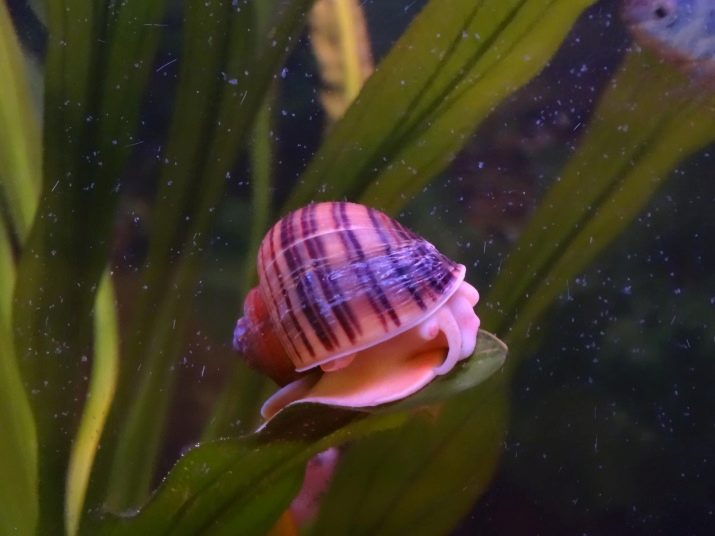
In addition, this creature brings considerable benefits to the aquarium ecosystem.
Description
The carapace of the ampulla has a special cap that tightens when a danger arises or under adverse conditions. These snails have a non-standard structure of the respiratory system. On the right side of the mollusk there are gills, on the left - the lungs. To breathe freely, he needs oxygen, and sometimes he rises to the surface in order to stock up on air through the breathing tube.
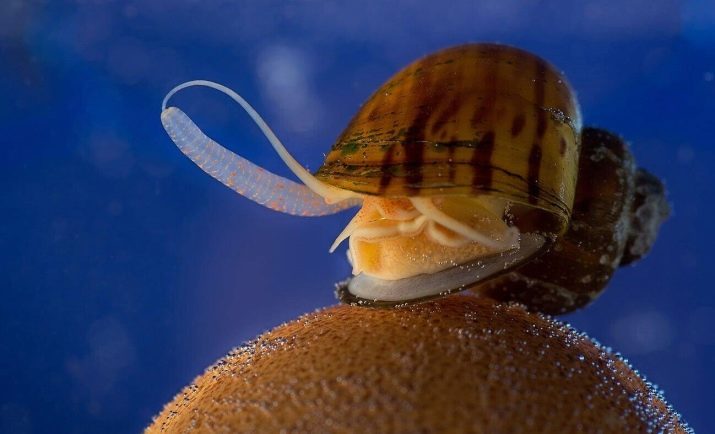
These creatures have a well-developed sense of smell, so they find food in the aquarium without any problems. In the region of the head, eyes and four tentacles can be seen. In nature, the size of ampularia reaches 11 cm, but in aquarium conditions it is rarely possible to grow a snail larger than 6 cm. The most common color is yellow, but in pet stores, individuals are available in white, blue, purple, light blue, pink, black, dark red. Most often, the color ranges from dark to very light.



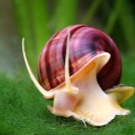
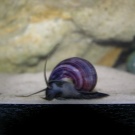

Life span
On average, the life expectancy of ampularia is limited to 4 years, but in an artificial home reservoir, these snails rarely live more than 2 years. The lifespan of ampularia depends on many factors. For example, the health of a snail can be influenced by the temperature of the aquarium water. The higher the indicators, the faster metabolic processes occur in the body, and this shortens the snail's lifespan... In addition, ampullaries can die an unnatural death.
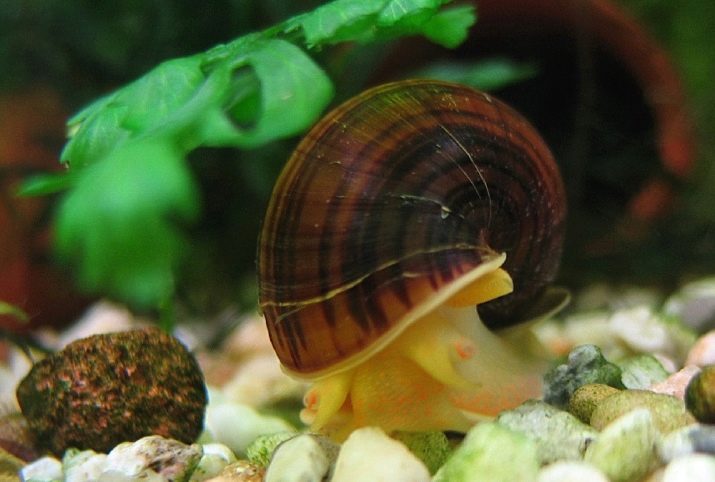
So, they can be the prey of large fish and predatory mollusks, this phenomenon is especially often observed during the breeding season - young snails often become food for their neighbors in the aquarium.
Finally, the attitude of the owner himself affects the duration of the aquarium life. A sloppy aquarist, when replanting ampularia, for example, during quarantine or breeding, can take this miniature creature inadvertently, crush the shell or drop the snail to the floor. Injury will shorten the snail's lifespan. In addition, these molluscs are prone to sprouting. Sometimes a snail that has escaped cannot be found or is pinned down by a doorframe.
In general, ampullaria are snails that are rather unpretentious to the conditions of keeping. Even an inexperienced aquarist will be able to follow simple rules of care and maximize the short life of a pet.
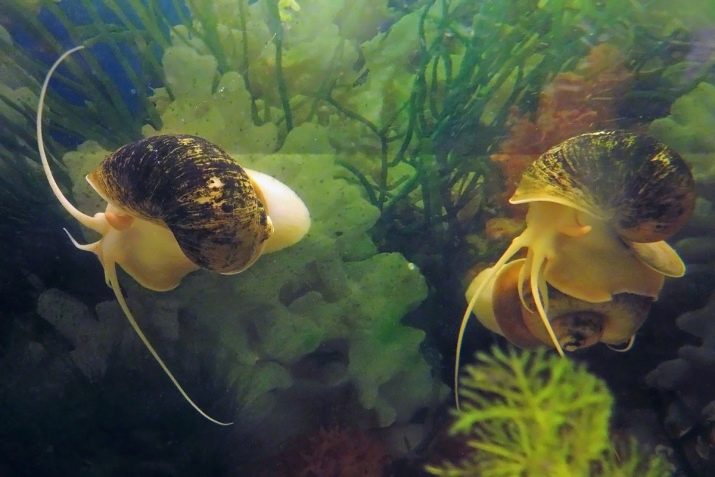
How to determine gender?
These colored snails are not hermaphrodites, unlike many of their relatives. These are heterosexual creatures, but it is not possible to determine the sex of individuals. If the aquarist wishes to breed ampularia, then he needs to get at once a group of mollusks of 4–6 individuals in advance in order to be able to bring at least one pair together. You can only distinguish a female from a male directly during the breeding season - during mating, the male will always be on top.
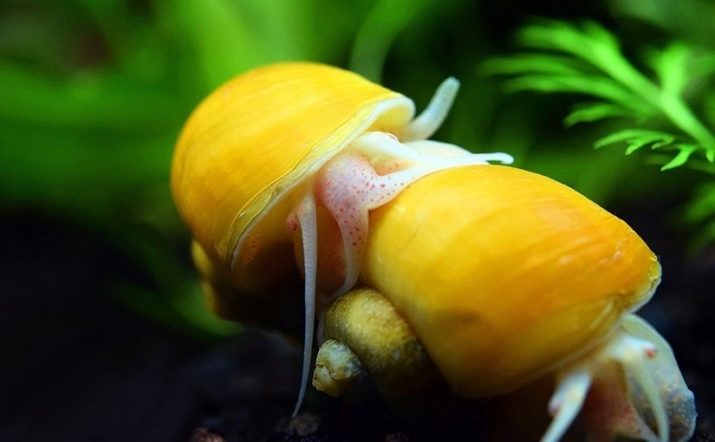
Species overview
Consider the most common varieties of ampullia for aquariums.
- Black. This individual has a black shell, decorated with golden, greenish or multi-colored stains. Quite a rare species that is valuable both for its aesthetic properties and for good coexistence with other inhabitants of the aquarium.

- White. This variety is not distinguished by its peacefulness and friendliness, but it is characterized by a very beautiful appearance - it is the owner of a white shell with golden-red suckers.
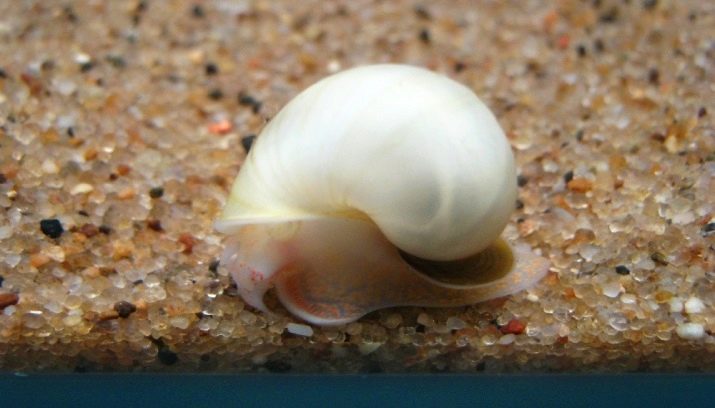
- Blueberry. The snail is purple in color and gets along well with most aquatic inhabitants.
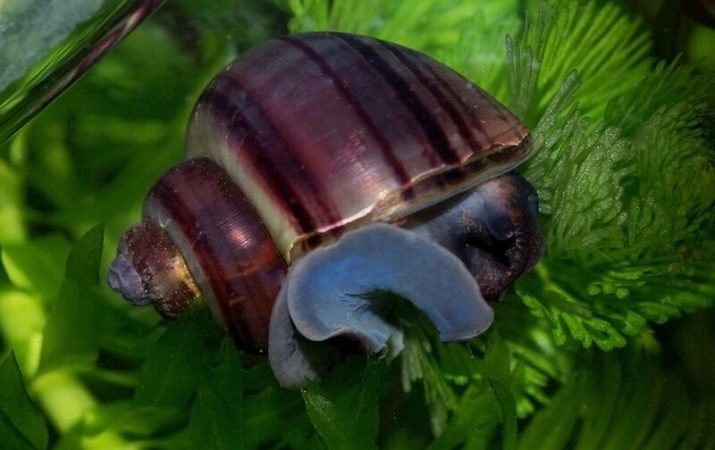
- Yellow. This is the most sought after variety. It has a yellow shell and an equally brightly colored torso. She treats her aquarium neighbors peacefully.
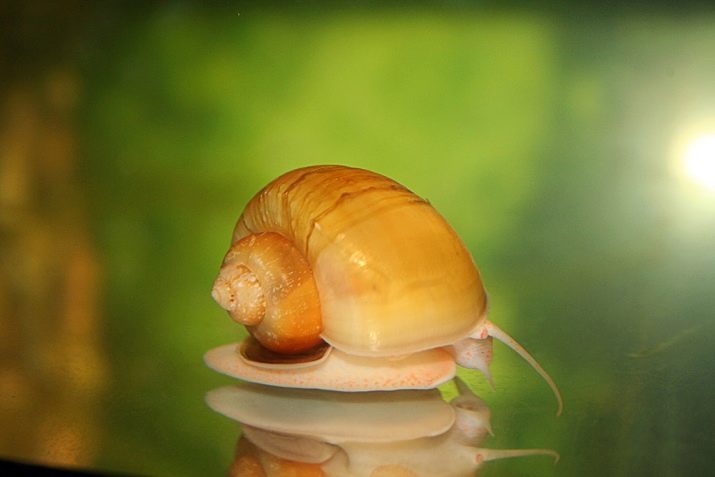
As a rule, the standard size of ampularia rarely exceeds 6 cm, but there is a separate species, the dimensions of which can reach 12-15 cm. Therefore, this variety is called the giant ampullia.
Many aquarists, especially beginners, dream of becoming the owners of such a large individual, but keeping such a mollusk is much more difficult than caring for a classic small snail.
Content rules
Before starting an ampularia, it is worthwhile to foresee all the risks for the snail in advance. For example, many inhabitants of aquariums are not averse to feasting on the contents of her shells, others tear off her antennae, and still others generally swallow the snail whole.
Even small fish are happy to hunt for caviar and mollusk cubs. Some aquarists have observed a situation when the ampulla itself ate a predator, but the snail cannot attack a fish or a large mollusk - it does not have enough strength or energy for this. And if the owner saw the ampulla eating up a fish carcass, then this fish was already dead, and the snail only feasts on its remains.
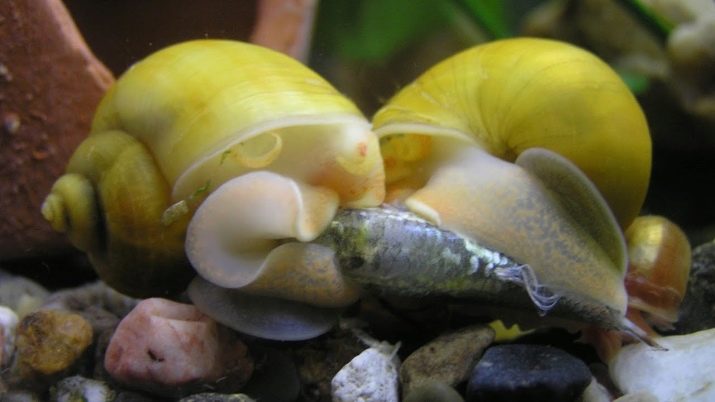
Therefore, for other creatures in the aquarium, ampullia are most often harmless.
but the mollusk is dangerous for most aquarium plants. These are rather voracious snails; it is better not to plant expensive rare specimens of aquarium flora in their tank.
Better to give preference to tough algae, these plants will remain intact, as their structure is too dense for a snail... An artificial reservoir that contains ampullae must be equipped with filtration and aeration systems.And also do not forget to clean these filters and change 30% of the aquarium volume once a week, pouring in fresh water that has settled during the day.

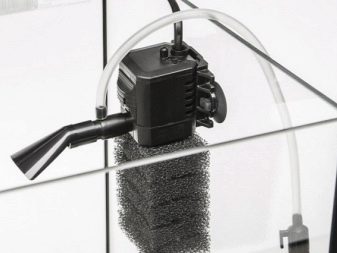
In general, a small 10-liter container is suitable for the ampullary, but for the black variety it is recommended to buy an aquarium with a volume of 40 liters or more. These mollusks are picky about water quality. Health problems can only be caused by increased levels of water softness. A favorable temperature for them is about +24 degrees. Do not forget regularly clean the soil with a siphonas these snails eat a lot and leave behind a lot of waste.

What to feed?
They are omnivorous snails. In the natural environment, they lean more on plant food, and in aquarium conditions, they will prefer to eat food that their neighbors fish have not eaten. Actually, this is the great benefit of ampularia. This snail belongs to the cleaners. Although its small size may not be able to cope with the large amount of waste left behind, it will still have a beneficial effect on the cleanliness of the aquarium.
Due to their natural sluggishness, mollusks do not always have time to feast on food that has not been eaten by fish, then their natural instinct leads them to plants. Do not keep valuable specimens of plants in the same tank with snails - the ampulla is capable of destroying them, digging up the soil under them in search of food, or breaking a fragile stem with its weight.
At the same time, it will not give up harmful algae, which, with uncontrolled reproduction, can fill the entire artificial reservoir, this is the second practical function of the ampullary snail. To preserve valuable plants, the pet needs to be fed with plant foods, which the neighbors in the aquarium will not be interested in. This can be, for example, lettuce, carrots, cabbage, cucumber. However, before placing the treat in the aquarium, scald it with boiling water.
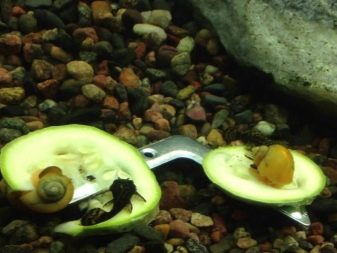
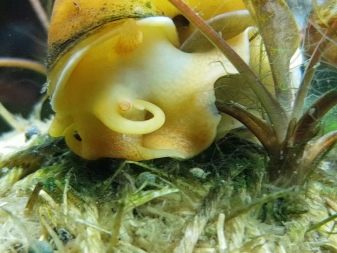
This action will not diminish the benefits of the plant food, nor will it spoil the water in the aquarium.
Breeding
It is quite easy to notice the mating of two individuals. Two snails intertwine, and after the act of love, they creep apart. After that, the female prepares for spawning. Sometimes she is able to store the material of a male individual in herself for several months.
Ampularia lay eggs on the surface of the water... They go upstairs and begin the masonry process. Usually, the eggs of the female prefer to leave on the glass. Caviar looks like a pale pink sticky substance, which, under the influence of air, becomes covered with a calcium shell. The offspring inside is capable of developing only on the surface and at high humidity. The incubation period is determined by temperature and humidity, usually it is limited to 1–2 weeks.
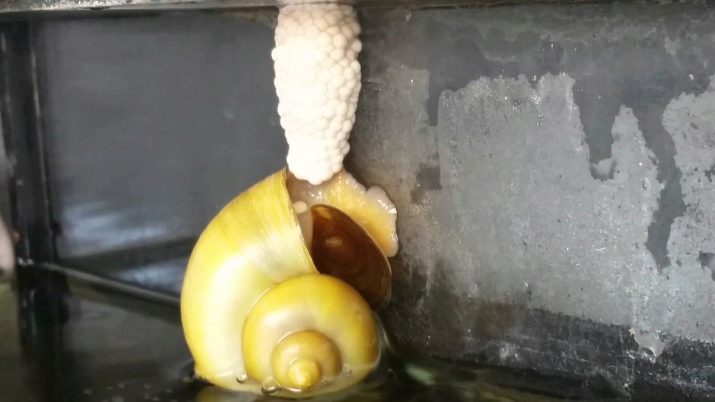
When the young inside the eggs have developed sufficiently, they will gnaw through their confinement and fall into the water. Some aquarists take measures in advance to preserve the offspring. For example, noticing that the female has laid eggs, they substitute a half of a plastic bottle on this area - and then the hatched snails will fall into the container and will be saved from gluttonous fish.
It is imperative to control the number of ampulariaas these snails are fertile and can quickly fill an entire aquarium. A large number of shellfish will soon destroy all green spaces.

It is better to raise pups in a separate jig. In this case, the owner will be able to control the growing process and more accurately calculate the portion of feed.
The initial food can be grated daphnia, gammarus, fish food, yolk, squid. Next, the kids are transferred to a crushed tubule, corotra, bloodworms. You can also offer greens, but do not forget to scald them with water. Remove any leftover food scraps to avoid contaminating the water. Do additional aeration of the water several times a day, and change all the water every three days. Babies grow quickly, they can soon be returned to the general aquarium.

Possible problems
With illiterate care, a snail can have health problems - she herself will let you know about it. For example, having noticed that the shell is destroyed in the ampulla, it can be assumed that the aquarium water has too high indicators of softness and the snail does not have enough calcium. To solve the problem, you can add a special agent to the artificial reservoir or put limestone on the bottom.
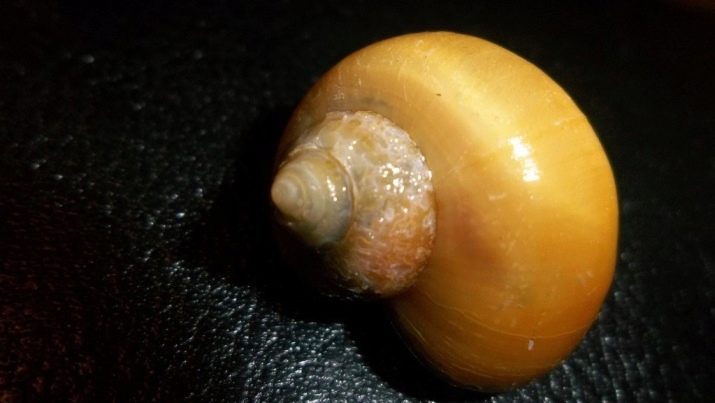
Sea shells can also serve as a source of calcium.
Some owners get scared when they see a snail floating on the surface of the water. However, this is normal for a clam. Ampularia has both gills and lungs, sometimes it needs oxygen, for this it rises to the surface. To ensure that the snail always has access to fresh air, it is important to leave an air gap between the surface and the lid when adding water to the aquarium.
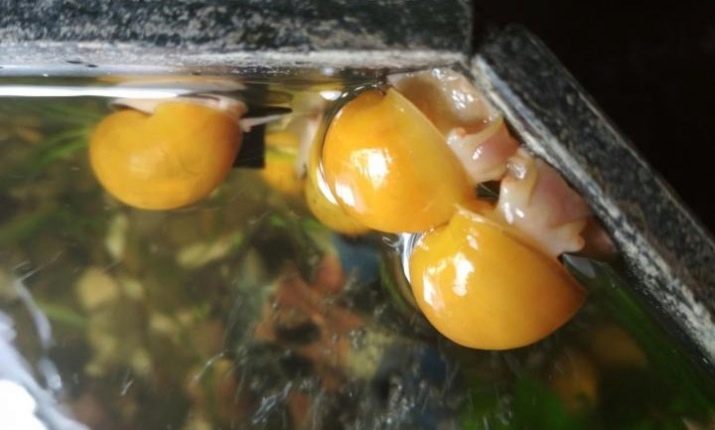
For the reproduction of ampullia, see the video below.








